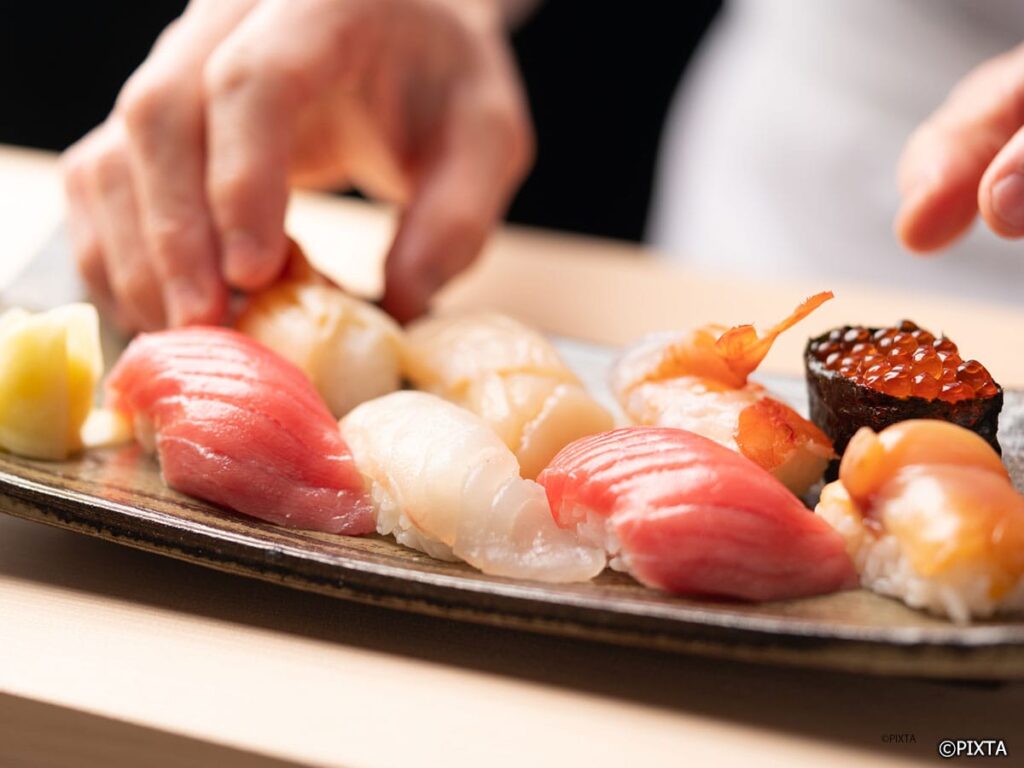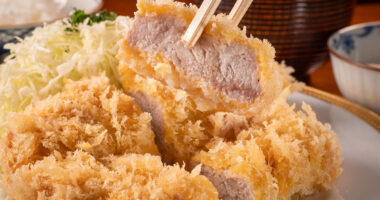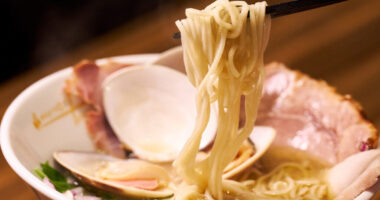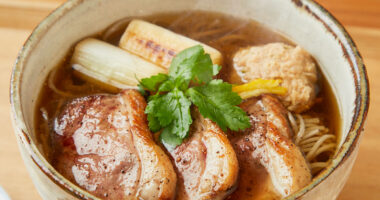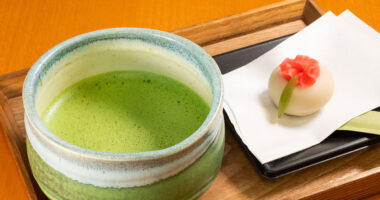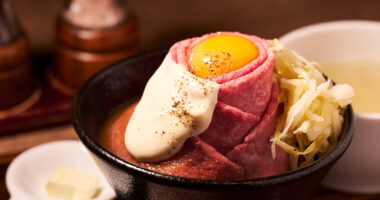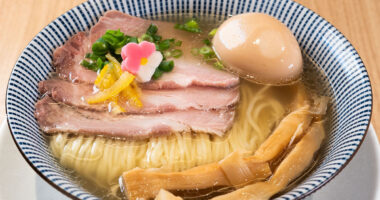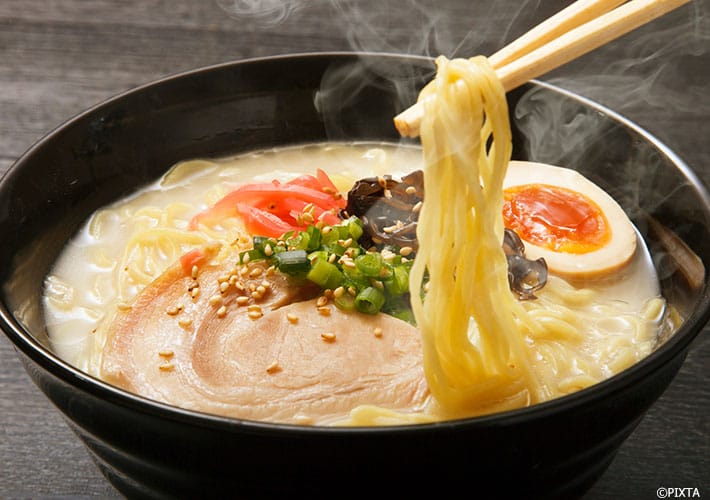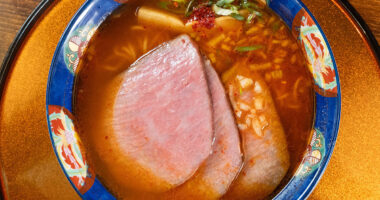Sushi (often written as 寿司 or すし) is a traditional Japanese dish that has become a global sensation. Its unique combination of ingredients can offer a delightful culinary experience. This dish is available in various forms across the world, but Japan is the best place to savor the authentic taste of sushi.
What is sushi?
Sushi is a food that’s served in bite-sized pieces, made of vinegared rice that’s combined with a variety of seafood, vegetables, or other ingredients. It can be served raw or cooked and can be enjoyed in many different ways.
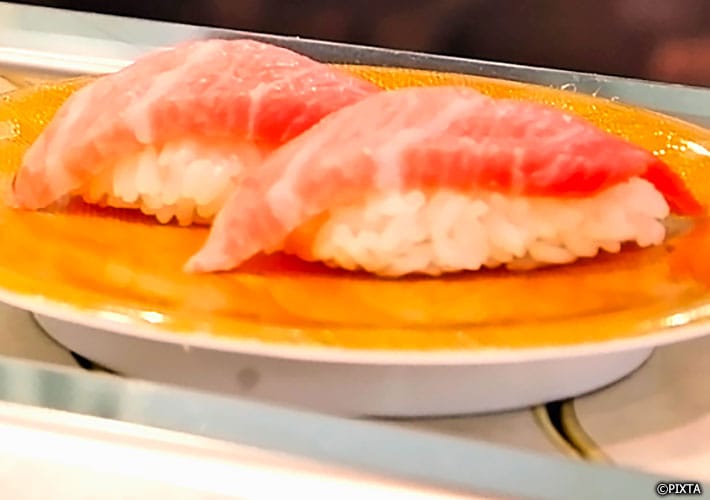
A plate of delicious fatty tuna traveling on the lane of a kaiten sushi restaurant.
Where to get sushi
Sushi is widely available in Japan and can be enjoyed in many places, including casual sushi bars, sushi chains, and high-end restaurants. Sushi is available at supermarkets and convenience stores as well.
Sushi carousel restaurants, known as 回転寿司 kaiten zushi, are a fun and easy way to enjoy sushi. These establishments are popular with tourists and often have menus in English and other languages. If you’re only having a few plates, you can get by spending under 500 JPY, but a full meal usually requires at least 1,000 JPY (under $10 USD).
As for other restaurants, depending on the quality and location, prices can range from around 1,000 JPY for a basic sushi set to several thousands of yen.
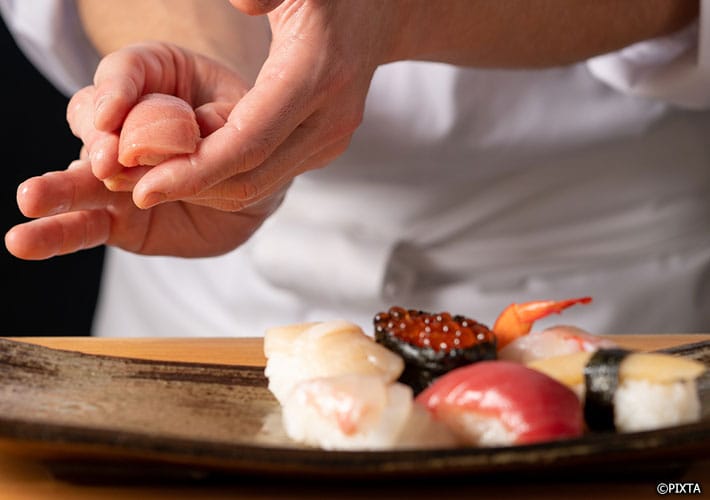
A sushi chef at a high-end sushi shop
At some high-end Japanese sushi shops, there are no menus. Everything is only on a おまかせ omakase (chef’s suggestion) basis and you could spend up to several tens of thousands of yen per person.
Sushi chefs at such establishments are highly skilled artisans who take great pride in their art, carefully crafting each piece of sushi with the utmost care to ensure that the flavors and textures are perfectly balanced.
Types of sushi
Sushi ingredients can range from fish such as tuna or salmon, fish roe, seafood such as scallops, sea urchin or octopus, and more. Recently, even meat sushi is served at some sushi restaurants. Although seafood is the star at most Japanese sushi shops, especially at major kaiten sushi chains, you’ll often find sushi and other items made with vegetables such as cucumber, pickled gourd, pickled plum paste, shiso leaf, as well as side dishes. Moreover, がり gari (pickled ginger) is commonly served with sushi. At kaiten sushi shops, it’s usually available, along with powdered green tea, in its own special container for you to enjoy.
As for sushi types, there are several, each with its unique flavor and texture. Here are the most common ones:
握り nigiri consists of a small piece of fish or other topping placed on top of a ball of vinegar rice. When it’s wrapped in nori seaweed, it’s called 軍艦 gunkan.
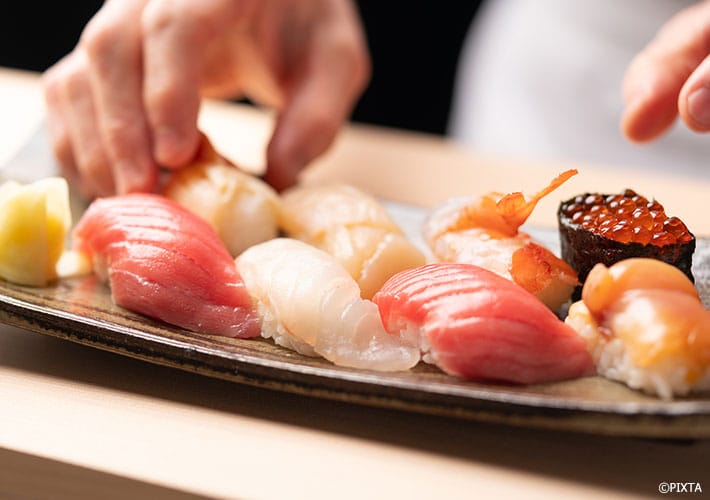
Assorted nigiri being prepared by a sushi chef.
巻物 makimono are Japanese sushi rolls made by wrapping the rice and toppings in seaweed. They usually have just one or two ingredients like minced tuna or cucumber, but there are also thicker versions, containing multiple ingredients.
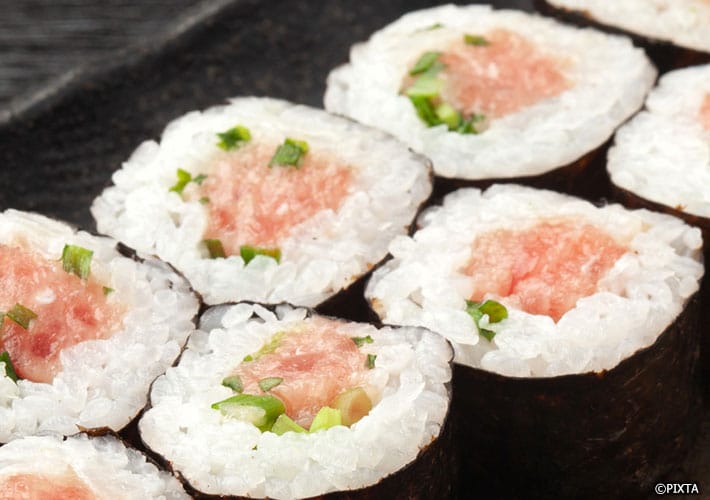
ネギトロ negitoro (finely minced tuna and green onion) maki.
手巻き temaki is a cone-shaped piece of nori seaweed filled with rice and various toppings. It’s not seen as often as other types of sushi in restaurants but it’s a popular way of enjoying sushi at home since it is easy to make.
ちらし chirashi is a bowl of sushi rice topped with various ingredients like sashimi, vegetables, and egg.
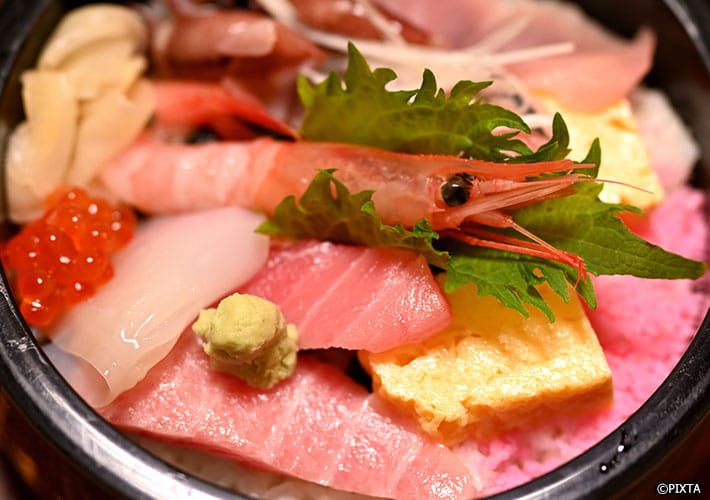
chirashi.
いなり inari is sushi rice wrapped in a pouch made of sweetened fried tofu.
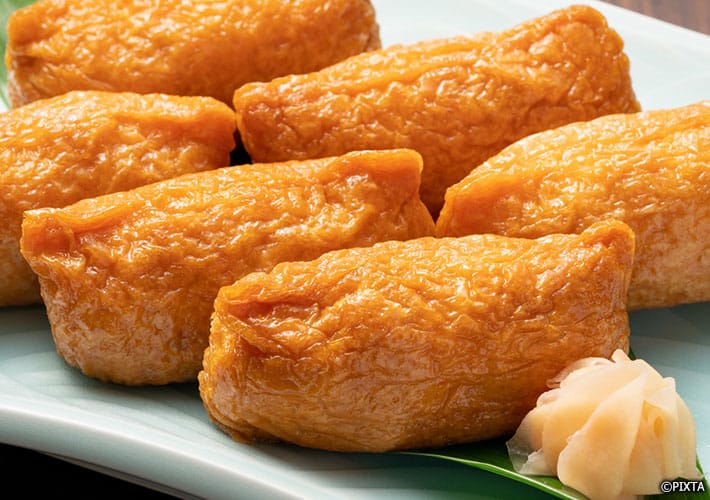
inari.
In addition to sushi, you’ll often find 刺身 sashimi (raw seafood) at sushi restaurants as well. This is a good option if you’re avoiding rice.
You can also seek out lesser-known types to elevate your sushi experience in Japan. For example, here are a few types that may not be as familiar to foreign visitors:
押し寿司 Oshizushi (pressed sushi): This type of sushi is made by layering ingredients and rice in a wooden mold before pressing it into a compact form and slicing it into pieces. Many regional varieties exist but one of the most famous ones is バッテラ battera sushi made with mackerel, in Osaka.
なれずし Narezushi: A traditional fermented sushi usually made with carp or crucian carp. Although less common in modern sushi restaurants, it can still be found in some establishments specializing in traditional Japanese cuisine. The unique flavor and aroma make it an interesting option for adventurous diners seeking to experience authentic, historical sushi.
Tips for enjoying sushi
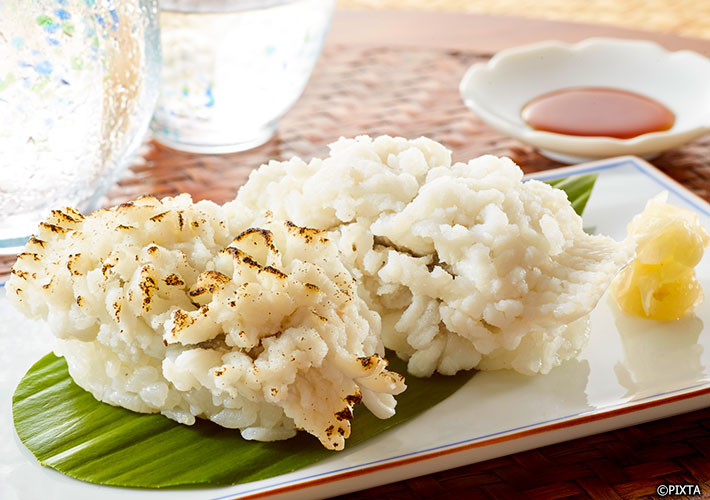
Parbroiled hamo pike conger sushi is a seasonal treat enjoyed in summer.
One great way of enhancing your sushi experience in Japan is to pay attention to seasonal specialties. Sushi ingredients vary throughout the year, offering unique and delicious options. For example, 初鰹 hatsugatsuo, the first bonito of the season, is delicious in Spring. Summer highlights include 鱸 suzuki (Japanese sea bass) and 鱧 hamo (pike conger), which fatten in the summer spawning season. Autumn brings the rich flavors of 秋刀魚 sanma (Pacific saury), while 鰤 buri (Japanese amberjack) is best enjoyed in winter when its umami and fat content increase.
When it comes time to dig in, enjoying sushi with your hands is the traditional way, but using chopsticks is also acceptable. If you do use chopsticks, try to avoid breaking the sushi apart. Many kinds of sushi are served with a small amount of wasabi inside, but you can request your sushi without it if you don’t like the taste. On the other hand, if you really enjoy it, you can also request some on the side.
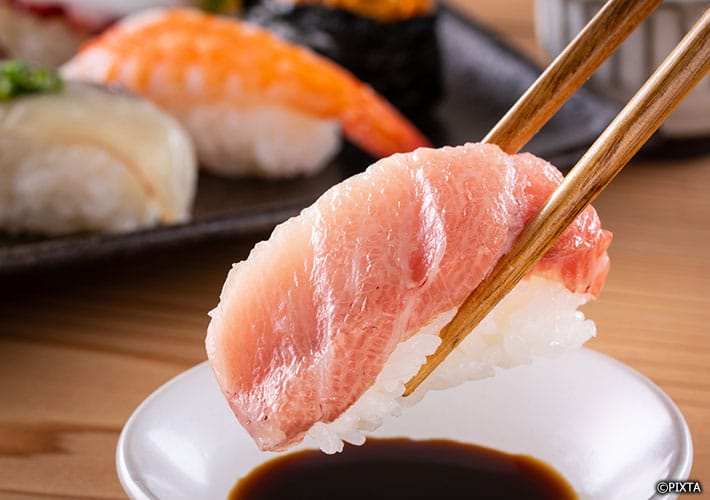
Dipping a piece of fatty tuna into a dish of soy sauce with chopsticks.
As for the order of eating during your meal, although there are no rules, it’s generally recommended to start with subtly-flavored fish (usually white-fleshed, such as flounder or snapper) before moving on to more strong-flavored ones, such as tuna and sea urchin. That being said, you should enjoy sushi your own way. Remember to have some pickled ginger or tea in between pieces of sushi to cleanse your palate and refresh your mouth.
Finally, pairing sushi with Japanese beverages like sake or green tea can also enhance the flavors of sushi. For example, a light and crisp sake complements the delicate taste of white-fleshed fish, while a full-bodied sake pairs well with rich, fatty tuna. Green tea is another excellent choice, as its refreshing taste cleanses the palate between bites.
In conclusion, sushi is an essential part of Japanese cuisine. It’s a dish that’s rich in history, flavors, and textures. By understanding the different types, seasonal specialties, and following a few tips, you can experience the best of what sushi has to offer in its native land. So why not try it on your next trip to Japan?
